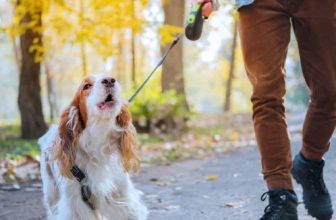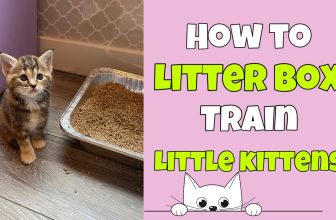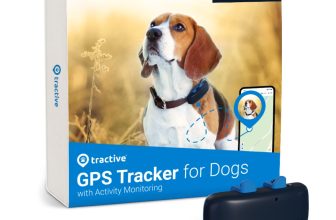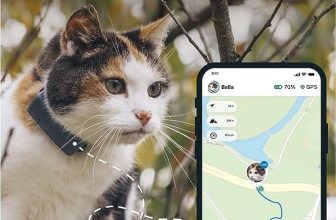How to Train a Puppy to Stop Nipping: Quick Tips

How to Train a Puppy to Stop Nipping: Puppy nipping is a typical problem among novice dog owners. While it may appear sweet at first, it can rapidly become problematic.
Training a puppy to stop nibbling is critical for a happy household. Puppies nip for a variety of reasons, including play, teething, and even curiosity. Understanding why your puppy nips is the first step towards correcting the problem. With patience and persistent instruction, you can teach your puppy to play well.
This approach not only saves your hands and furniture but also teaches your puppy correct social skills. In this post, we will look at helpful ways to prevent nipping. You’ll find useful recommendations that can significantly improve your puppy’s conduct. Let’s start this critical adventure together!
Introduction To Puppy Nipping
Puppy nipping is a normal behaviour. Puppies explore the world with their mouths. They nap to play, show excitement, or get attention. This behaviour is common in young dogs.
Understanding why puppies nip is important. They often do this during play. It helps them learn social skills. Puppies also nip when they are teething. Their gums may hurt, and they seek relief.
Goals of nip-training include:
- Teaching the puppy to be gentle.
- Stopping unwanted nipping behaviour.
- Helping the puppy learn bite inhibition.
- Encourage positive play habits.

Credit: m.youtube.com
Identifying Nipping Triggers
Understanding what makes your puppy nip is very important. Certain things can trigger this behaviour.
- Excitement: Puppies often nip when they are happy.
- Playtime: They may bite when playing with toys or people.
- Attention: Some puppies nip to get your attention.
- Hunger: A hungry puppy may nip to ask for food.
- Stress: Fear or anxiety can also lead to nipping.
Stress: Fear and worry can also lead to nipping.
Pay special attention to your dog. Observe when they nip the most. Keep note of these moments. This will assist you in comprehending their behaviour.
Essential Training Tools
Training a puppy requires time and the proper tools. Bite inhibition toys help your puppy learn what is safe to chew. These toys are soft and enjoyable for the puppy. They can assist to minimise nipping.
Safe environments are also vital. Make a dedicated space for your puppy. This place should be calm and cosy. It helps the puppy feel secure.
Setting boundaries is key. Let your puppy know where they can play. Use baby gates or crates to manage their space. This helps them learn what is okay.

Credit: pupford.com
Implementing Bite Inhibition
Teething toys are great for puppies. They help with discomfort. Puppies like to chew. Give them the right toys. This keeps their focus away from your hands.
Human interaction is also important. Play gently with your puppy. If they nip, stop playing. This shows them that nipping is not okay.
The ‘Yelp’ technique is straightforward. They make a high-pitched sound when they nip. This sound is similar to those made by other puppies. It teaches them how to quit.
Consistency is essential. Use the howl whenever they take a nap. Soon, your dog will learn to be gentle.
Positive Reinforcement Strategies
Positive reinforcement helps pups learn excellent conduct. Use goodies and praise to reward your puppy. Give a treat every time your puppy stops nipping. This demonstrates that stopping is beneficial.
Be consistent in your incentives. Consistently reward the same behaviour. This helps your puppy understand what you want. If they nip, say “no” firmly but kindly. Then redirect them to a toy.
Make sure everyone in your home uses the same rules. Consistency helps your puppy learn faster. Patience is important. Training takes time, but it is worth it.
Redirecting Nipping Behavior
To train your puppy to stop nipping, consider some alternate activities. Offer them a chew toy. This provides them with something safe to bite. Play activities such as fetch and tug-of-war. These games allow them to focus on something else.
Teach your puppy simple training commands. Use terms such as “sit” or “stay.” Reward them with sweets when they listen. This fosters a close bond and facilitates their learning. Consistency is essential. Repeat the commands on a daily basis. Over time, your dog will learn what you desire.
When your puppy starts to nip, redirect their energy. Use toys or commands. This shows them there are better options. Always be patient and kind. Your puppy is learning and needs your support.
Dealing With Persistent Nipping
Nipping can be a big problem for puppies. The Time-Out Method helps teach them better behaviour. When your puppy nips, say “no” firmly. Then, take them to a quiet spot.This location should be away from entertaining activities. Leave them there for about 30 seconds. This teaches them that nipping ends fun.
Allow them to return following the time-out. Praise them for their calm demeanour. Repeat the process if they nip again. Consistency is quite crucial. Puppies learn best from clear guidelines.
A professional trainer might occasionally be of assistance. They are familiar with a variety of techniques. They can guide you and your puppy. This assistance might make training simpler and faster.
Maintaining Progress
Regular training sessions are essential for your puppy. Set aside time every day. Keep sessions brief and enjoyable. Puppies learn best in short bursts. Use goodies to promote positive behaviour. This helps them remember what they need to do.
Monitoring your puppy’s behaviour is critical. Observe how they respond during training. If nipping occurs, end the session. Change your strategy if necessary. Adapting helps your puppy learn better. Be patient and positive.
Common Mistakes To Avoid
Negative punishment can confuse your puppy. Taking away fun things can make them scared. This does not help them learn.
Be careful with inconsistency in training. Always use the same rules. If you change rules, your puppy will not understand.
For example, if nipping is okay sometimes, it is hard for your puppy to learn. Stick to one method. This helps your puppy feel safe and learn better.
Make sure everyone in your home follows the same rules. This keeps training clear. Your puppy needs to know what is right and wrong.
Conclusion And Further Steps
Continued socialisation is very important for your puppy. Take your puppy to new places. Meet new people and other dogs. This helps your puppy learn how to behave. It also reduces nipping behaviour.
Use advanced training techniques to help your puppy. Teach commands like “sit” and “stay.” Use positive rewards like treats. Consistency is key. Always reward good behaviour. This makes learning fun and easy.
Practice short training sessions. Keep them under 10 minutes. Puppies have short attention spans. Repeat commands often. This helps your puppy remember what to do.

Credit: pupford.com
Frequently Asked Questions
How Do I Train My Puppy Not To Nip?
To train your puppy to stop nipping, use positive reinforcement. When your puppy bites, let out a yelp to mimic their littermates. Redirect their attention to toys or chews. Consistency is key; repeat this process every time they nap. Reward them when they play gently.
What Are The Best Toys For Nipping Puppies?
The best toys for nipping puppies are durable chew toys. Look for options made of rubber or nylon. These toys can withstand strong bites and satisfy their chewing urges. Interactive toys like tug ropes can also be great for playtime.
Always supervise your puppy during play.
Why Does My Puppy Nip At Me?
Puppies nap to explore their environment and communicate. They may also nip during play as a natural behaviour. It’s important to teach them that nipping is inappropriate. Redirect their energy towards toys and provide plenty of exercise. This helps reduce excessive nipping behaviour.
Is Nipping A Sign Of Aggression In Puppies?
Nipping is generally not a sign of aggression in puppies. Instead, it’s a common behaviour linked to play and exploration. However, if your puppy’s nipping is excessive or accompanied by growling, consult a trainer. Proper socialisation and training can help manage this behaviour effectively.
Conclusion
To train a puppy to stop nipping takes patience and consistency. Use positive reinforcement for good behaviour. Redirect their energy with toys or games. Socialise your puppy to help them learn bite control. Always stay calm and avoid harsh corrections. Remember, every puppy is different.
Celebrate small victories along the way. With time and effort, your puppy will learn not to nip. Enjoy the journey together. A well-trained puppy brings joy to your home.






